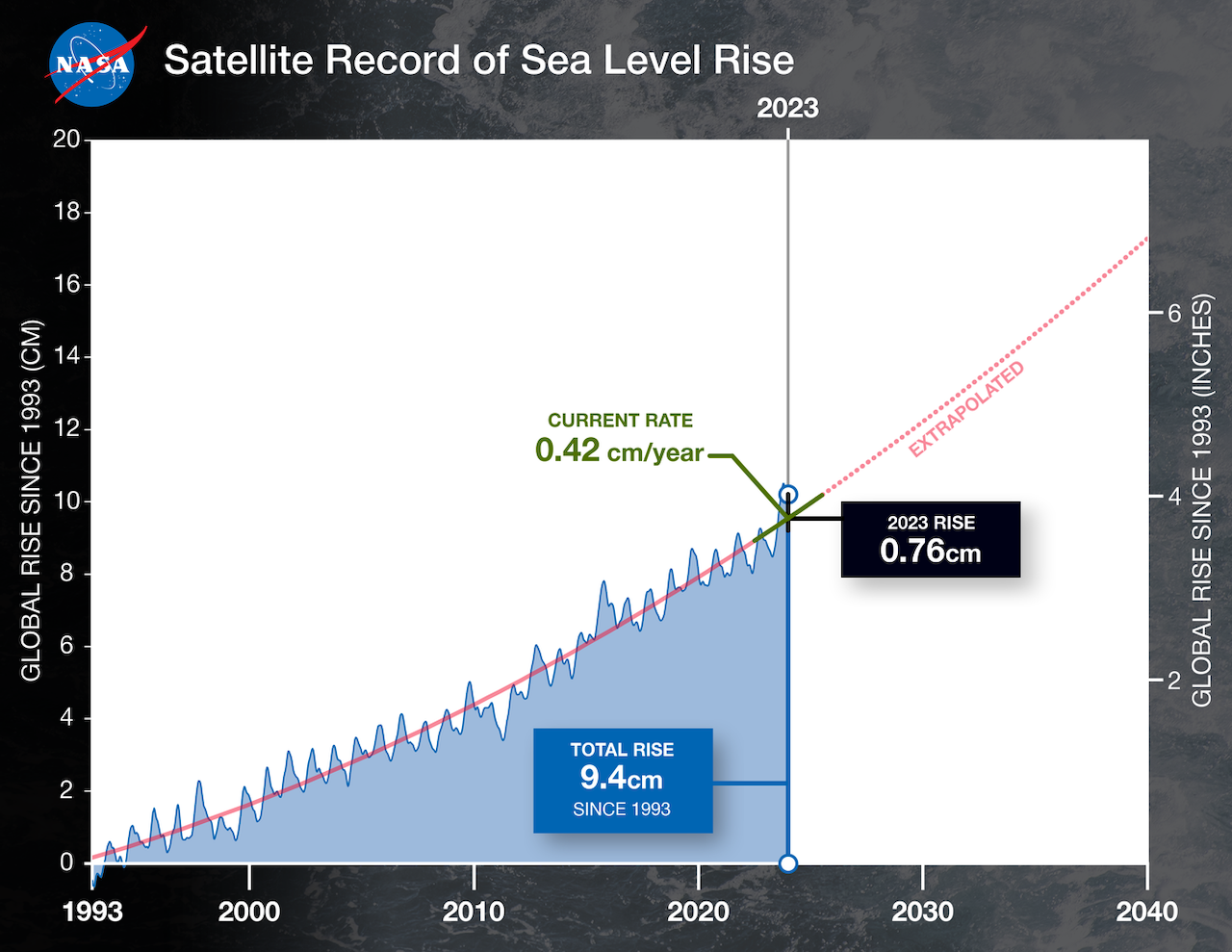A long-term sea level dataset shows ocean surface heights continuing to rise at faster and faster rates over decades of observations.
A recent NASA-led analysis reveals that global average sea level rose by approximately 0.3 inches (0.76 centimeters) from 2022 to 2023, primarily due to a warming climate and a strong El Niño event. This increase is significant, equivalent to draining a quarter of Lake Superior into the ocean within a year. The analysis, spanning over 30 years of satellite observations, indicates a total rise of about 4 inches (9.4 centimeters) since 1993, with an accelerating rate of increase, doubling from 0.07 inches (0.18 centimeters) per year in 1993 to 0.17 inches (0.42 centimeters) per year presently.
The shift between La Niña and El Niño conditions significantly impacted sea level during this period. A mild La Niña in 2021-2022 led to lower-than-expected sea level rise, while a strong El Niño in 2023 contributed to the observed increase. These climate phenomena influence rainfall patterns and sea surface temperatures globally. While such short-term effects can cause fluctuations, the overarching trend of rising sea levels over decades is primarily attributed to global warming.
Continuous international cooperation and advancements in radar altimetry technology have enabled precise measurements of sea level over time. These measurements, combined with data from tide gauges and other sources, enhance our understanding of sea level rise and its contributing factors, including ocean temperature, ice loss, and land motion. This comprehensive approach aids in predicting future sea level changes and their impacts, such as increased flooding frequency worldwide.



Recent Comments